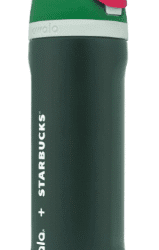UK consumers are eating and feeling significantly healthier than last year, driven in particular by younger people as food inflation eases, according to new polling for market research consultancy Savanta.
Savanta’s Q1 2024 Grocery Eye Report, which tracks consumer behaviour every quarter, suggests that one third (32%) of UK consumers are ‘feeling healthier’ than last year – a seven-point increase on the same question in 2023.
The research paints a picture of consumers beginning to feel a respite from inflationary rises, with:
- Shoppers eating more healthy products (49%), cooking from scratch more (37%) and exercising more (30%)
- Consumers are increasingly interested in ‘super foods’ such as products focused on gut health (40%) and high protein (25%)
- There has been a four-point increase in consumers saying they eat a plant-based diet since the same time last year, from 8% to 12%, which the largest increases in under 35’s
However, a significant proportion of UK consumers are still struggling, with four in ten (42%) saying that the cost of healthy food has led them to be less healthy, with around the same amount (39%) sacrificing healthy food to afford other essentials.
Julie Vigne, senior director at Savanta, says: “The UK is starting to feel healthy again, after several years of food shopping being driven by the cost of living crisis. Our research implies people are starting to prioritise their health again, with more consumers buying healthier products and taking the time to cook more from scratch.”
“Interestingly, our Grocery Eye reports suggests younger people continue to drive increases in plant-based diets, a trend which is showing no signs of slowing down. But it’s not all positive, which a big chunk of the public wanting to eat healthier, but unable to.”
The research forms part of Savanta’s Grocery Eye report with data back to 2014, that takes place once every quarter, surveying 500 UK nationally representative shoppers based on age, geography and affluence. The reports also track the progress of four resilience groups – defined by socio-economic attitudes – to go further than demographics in understanding consumer resilience to economic downturns.








